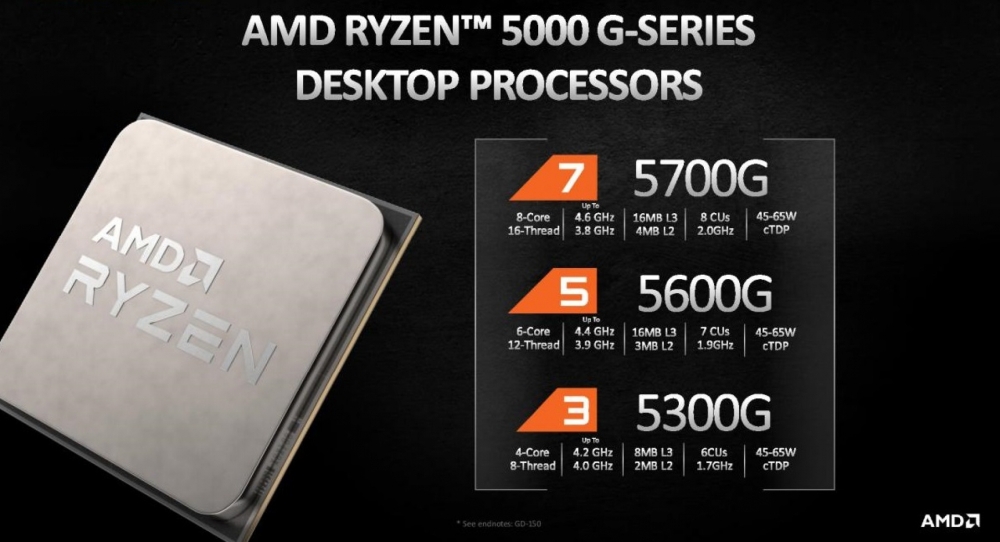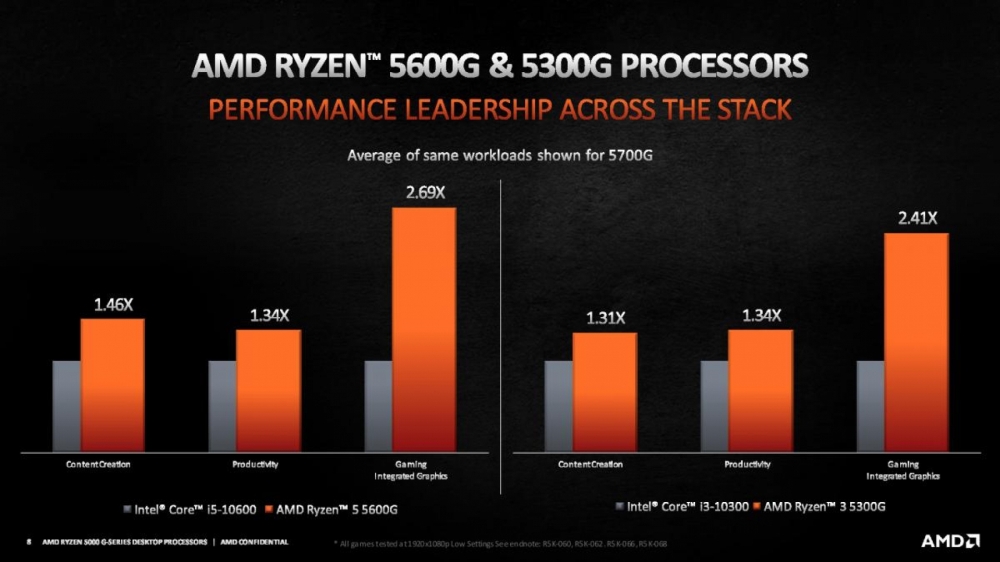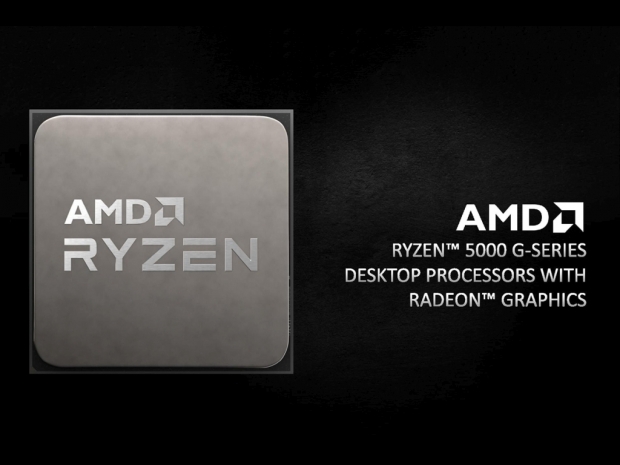As expected, the AMD Ryzen 5000G series desktop processors are similar to the Ryzen 5000 Mobile series CPUs, as you get Zen 3 based CPU cores paired up with Radeon Vega graphics. While the graphics part of the chip is pretty much the same as on the Ryzen 4000G series, the new Ryzen 5000G series should heavily benefit from Zen 3 CPU architecture with a larger L3 cache.

According to AMD's own product list, we are looking at six different SKUs, including the 65W Ryzen 7 5700G, Ryzen 5 5600G, and Ryzen 3 5300G, and the power-efficient 35W Ryzen 7 5700GE, Ryzen 5 5600GE, and Ryzen 3 5300GE parts.

Of course, the GE parts are similar to the standard G-series, with a slightly lower base frequency in order to hit the 35W TDP.
As you can see from the list below, 8-, 6-, and 4-core parts, that should do quite well, and although we would prefer to see an RDNA-based integrated GPU, the Vega GPU architecture still packs quite a punch in this market segment. It is worth noting that the Ryzen 5000G series also lacks PCIe 4.0 connectivity.
According to AMD, the Ryzen 5000G series should do well compared to Intel's 10th gen CPUs, and, even the Ryzen 5 5600G and the Ryzen 5 5300G, should do well against Intel's counterparts in both productivity and gaming.


As noted, these Ryzen 5000G series APUs will first be available to OEMs like Dell, HP, Lenovo, but some suggest that retail/e-tail should see them later this year.




